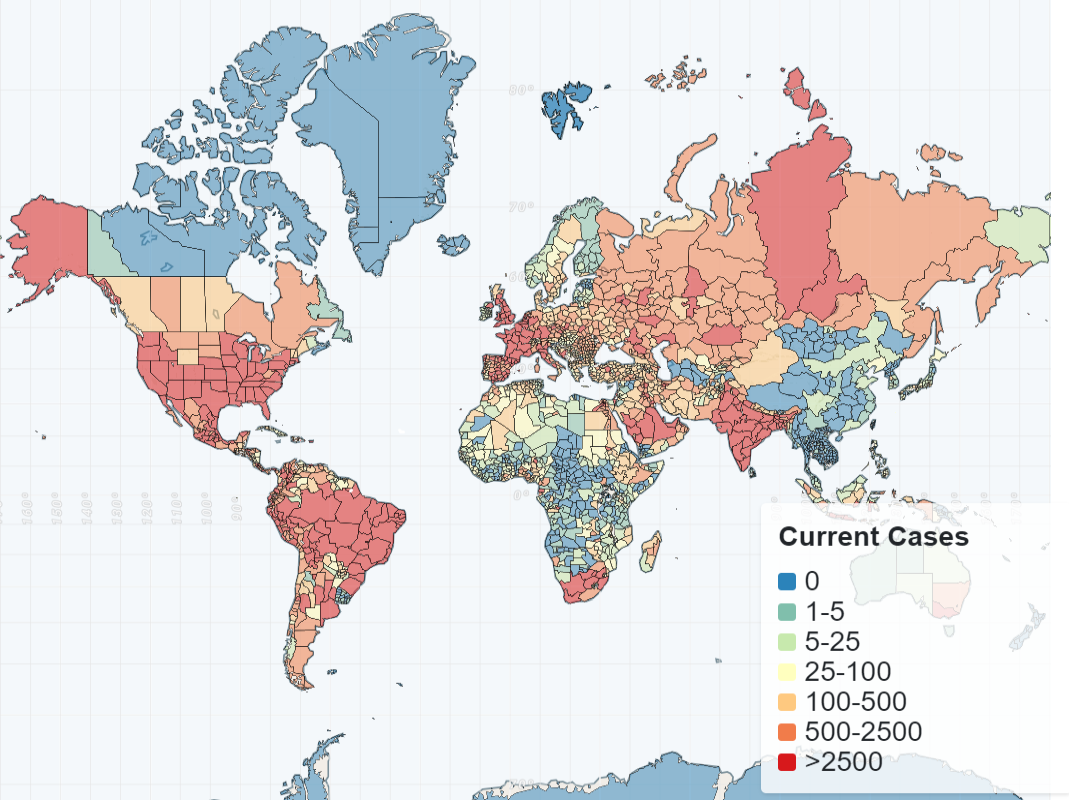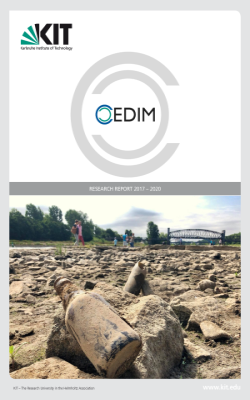News from CEDIM: Corona-Dashboard and Research Report 2017 - 2020
The Center for Disaster Management and Risk Reduction Technology (CEDIM) is an interdisciplinary research institute at KIT in the fields of disasters, risks, and security. CEDIM conducts research on the causes, the handling and prevention of natural and technical risks and develops new models and concepts for this purpose. Currently, ten KIT institutes are involved in CEDIM. Recently Prof. Michael Kunz was elected as speaker for another 3 years; general manager is Dr. Susanna Mohr (both IMK-TRO).
Pandemics have not been the focus of CEDIM's research work so far. However, this has changed with the current Covid-19 pandemic, which shows many similarities to major natural disasters. Apart from the effects on system-relevant areas, in both cases the most valid, up-to-date and high-resolution data possible are an essential basis for decisions - a topic that has concerned CEDIM for many years. Since February 2020, CEDIM and Risklayer (CEDIM/KIT spin-off) teamed up with many volunteers to collect current Covid-19 case numbers on a sub-national level. The numbers are processed using the CATDAT database and distributed via the new CEDIM/Risklayer Explorer (Fig. 1; Germany/World). Compared to the official statistics of the Robert Koch Institute, the information collected by CEDIM/Risklayer is more precise, up-to-date and has a higher granularity – in particular for Germany, where it is partly available down to the municipal level. The interest in the data is considerable: they are processed and published by various media (ZDF, Tagesspiegel, BNN, MDR, etc.) and feed into the dashboard of the Johns Hopkins University. It is also planned to use the data within the frame of research projects. CEDIM researchers recently submitted a DFG proposal to investigate causal chains between non-pharmaceutical interventions (measures) and the course of case numbers.
Fig. 1: Current Covid-19 cases (as of 21.09.2020) worldwide (http://www.risklayer-explorer.com/event/6/detail)
|
The current CEDIM Research Report 2017-2020 (Fig. 2) gives an overview about this activity and other research work and activities of CEDIM in the last three years. The projects funded by CEDIM in the last funding phase had the objectives to investigate the resilience of existing and future energy and mobility systems using model analyses and case studies in test areas and to identify critical elements and processes decisive for failures of various systems. These projects were complemented by research on rapid loss estimations after natural disasters. In addition to the existing internet platform wettergefahren-fruehwarnung.de, which was relaunched with a new design and in English last year, the new interactive information portal risklayer-explorer.de was launched, on which information about current extreme events and disasters will become available – besides the Covid-19 statistics. In addition, the Research Report 2017-2020 contains various reports on worldwide catastrophes, some of which have been examined more closely in the context of Forensic Disaster Analysis (FDA) by CEDIM. The objectives of this ex-post research approach are to assess disasters directly after their occurrence, to estimate the impacts, to assess the temporal development and to identify the main factors that determine the impact (see also here). Finally, the Research Report 2017-2020 provides an overview about ongoing and completed third-party funded projects that have been acquired by CEDIM researcher, presents new research collaborations and report on various outreach activities of CEDIM. |
Fig. 2: Recently published, the new CEDIM Research Report 2017 – 2020. |
[Working group: Atmospheric risks]
Author: Michael Kunz
21.09.2020


